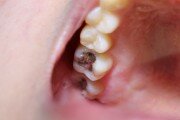Environmental health is the branch of public health that is concerned with all aspects of the natural and built environment that may not only affect human health but also the health of our planet.
Here at The Daily Health we explore the detrimental effects of rising levels of pollution, the negative consequences of the pesticides and herbicides used on the food that ends up on your dinner plate as well the impact of electric and electronic devices on your health, to mention but a few.
Environmental health affects all of us – the entire planet… the plastic bottles in which we buy our water, the genetic modification of our crops and the fluoride in our toothpaste and drinking water. It’s all about how our behaviour and technology impacts our environment and as a result, how this has a knock on effect on our wellbeing and the health of our planet.
In short, Environmental Health is the field of science that studies how the environment influences human health and the development and occurrence of disease.
For instance, we’ll tell you about the numerous hazardous chemicals found in conventional paint – used in households across the country, known as ‘volatile organic compounds’ or VOCs – which have been linked an array of cancers such as liver and stomach cancer.
Well highlight the dangers of neurotoxic poisons used in pesticides is not only affecting your health, but it is also destroying the bee population, which spells disaster for all of us.
You’ll also learn more about the damaging chemical found in plastic bottles and other food containers that can have affect fertility and even cause cancer… plus much, much more.
The Daily Health offers information that will help you understand what we are all up against and how you can stop this vicious cycle from affecting our planet… and your health.
Instead of reviewing existing evidence, FDA scientists conducted their own BPA research. The final opinion from FDA researchers: Blood levels of BPA are too low to do any harm.
In short: Don’t worry your pretty little heads about daily BPA intake. Now run along!.. Yet, finally the FDA enforced the same ban as in Europe, despite the fact that warnings about the dangers of this toxin have been doing the rounds since 2002.
Read More
A recent study, published in the journal Environmental Health Perspectives, which found that pregnant mothers exposed to chemicals such as butyl benzyl phthalate are up to 50 per cent more likely to have children who suffer from eczema. Butyl benzyl phthalate (BBzP), also called n-butyl benzyl phthalate (BBP) or benzyl butyl phthalate, is widely used in vinyl flooring, artificial leather and other materials, and can slowly be released into the air in our homes.
Read More
Three years ago, a Journal of the American Medical Association (JAMA) study linked high BPA urinary levels to increased risk of heart disease and type 2 diabetes.
Then, in another JAMA study published last year, subjects who ate freshly made soup every day for five days had an average BPA level of 1.1 micrograms per litre of urine. Average BPA in subjects who ate soup from cans was an astounding 20.8 micrograms per litre!
Recently, the Natural Resources Defence Council petitioned the American Food and Drug Administration (FDA) to ban the use of BPA in any container where food makes contact with the chemical.
Read More
There are numerous hazardous chemicals in conventional paint. Those identified to cause harm are known as ??volatile organic compounds ?? or VOCs. These VOCs are derived from petrochemicals and readily release vapours (outgassing) at room temperature, which seriously affects indoor air quality.
Read More
Using a microwave every once in a while may be convenient. But if you are trying to cook healthy foods, there’s no place for radiation, especially if you take into account the potential cumulative effect of ingesting traces of those dangerous materials week after week, month after month, year after year… eventually it all adds up.
Read More
Ionized radiation, in high amounts with repeated exposure, can cause some serious biological damage, and although body scanners using backscatter X-rays use the waves in very small amounts, there is no known minimum to ensure that the rays will not damage body tissue. US research has suggested that up to 100 US airline passengers a year could get cancer from the scanners.
Read More














